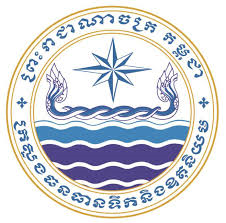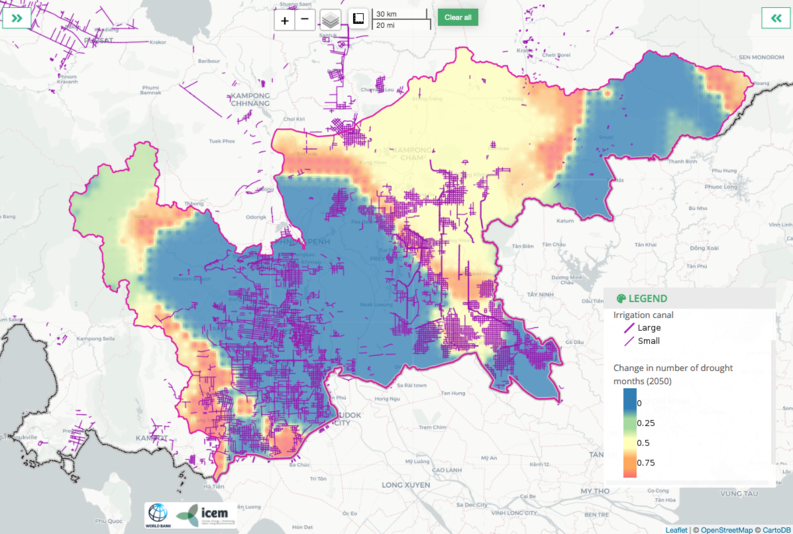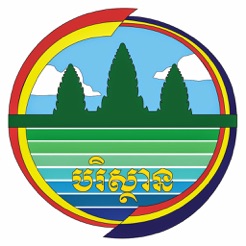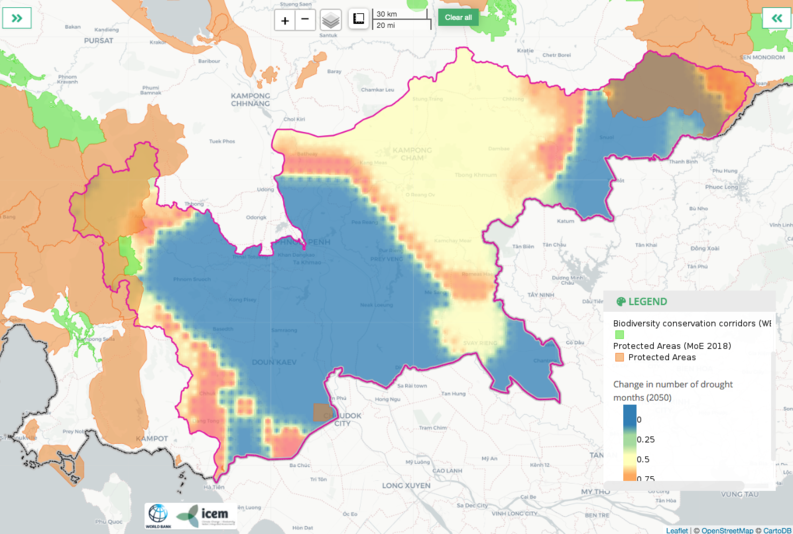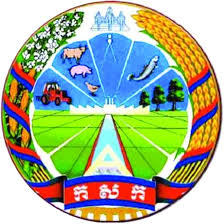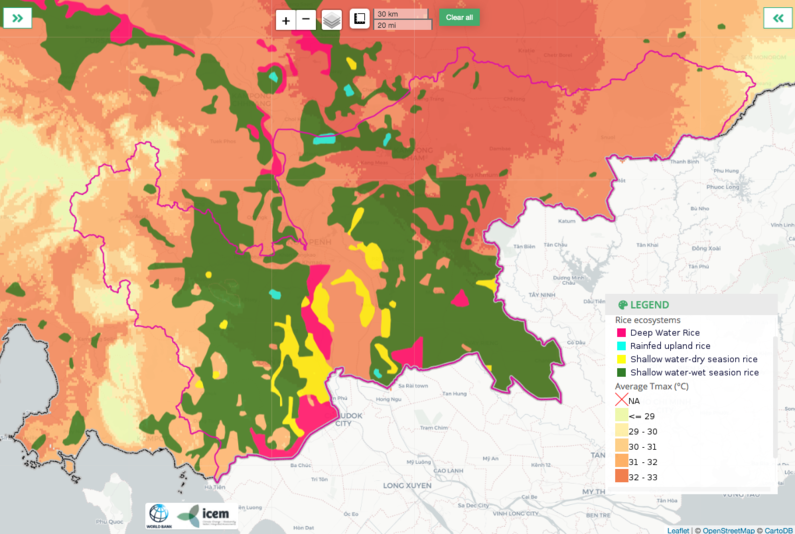As the government body responsible for planning and management of water resources, the Ministry of Water Resources and Meteorology (MoWRAM) is tasked with overseeing the strategic development and rehabilitation of irrigation infrastructure across the Mekong Delta. MoWRAM's mandate further encompasses water resources monitoring, hydro-meteorological data collection and management; hydrological and meteorological research; and disaster risk management.
"The digital Atlas seeks to improve understanding on the potential consequences of future climate change on infrastructure assets, agriculture and natural ecosystems of the Cambodia Mekong Delta."
ATLAS USE CASE: IRRIGATION INFRASTRUCTURE PLANNING
Irrigation infrastructure planning in the context of climate change
Much of Cambodia's agricultural productivity is constrained by dependence on rainfall, with agricultural areas disconnected from much of the existing irrigation network of canals.
Some 80% of total national rice production is derived from the wet season crop (FAO 2016). The lack of irrigation system capacity across much of Cambodia means that more than 95% of land used to grow rice during the rainy season remains uncultivated during the dry season (Erban & Gorelick 2016). Drought poses a critical hazard to the agricultural sector. The FAO describes the economic consequences of drought in rebuilding livelihoods and protecting lives in Cambodia as substantial (Inter Press Service 2016).
Studies indicate future climate change will lead to intensified agricultural drought in the southern part of the Mekong Basin and flooding across the entire basin (Evers & Pathirana 2018).
An understanding of the provision of irrigation capacity to support agricultural production is central to the mandate of MoWRAM. In support of this aim, the Cambodia Mekong Delta Digital Atlas (CAM-MeDiA) enables the visualization of existing and future planned irrigation canal infrastructure within the context of climate change.
The Atlas enables users to overlay and assess irrigation infrastructure of the Cambodia Mekong Delta in relation to future projected climate change variables (mean change of maximum temperature and mean percentage change in precipitation), and projected future drought and flood.
CAM-MEDIA maps
Overlaying of irrigation canals on future projected changes in drought in the 2050s provides insight into the extent of current infrastructure with regard to potential future hotspots of drought risk. For instance, where should investment be prioritized regarding canal rehabilitation and construction? Planning would also require that these data are considered alongside information on projected future land uses (e.g. conservation areas). NOTE: a use case example for conservation area planning is also available as part of the series of fact sheets.
Cambodia Mekong Delta: overlaying of irrigation canal network on projected changes in drought in the 2050s

